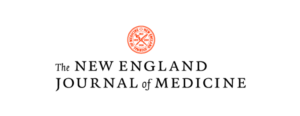Devilish Bedfellows: Drug Companies and Medical Journals (and the doctors who rely on both)

“Much of what medical researchers conclude in their studies is misleading, exaggerated, or flat-out wrong. So why are doctors—to a striking extent—still drawing upon misinformation in their everyday practice?” – David H. Freedman [Lies, Damned Lies, and Medical Science, The Atlantic Nov 2010]
“It would be nice to believe that medical journals are bastions of truth and light, but evidence suggests otherwise.” – Beatrice Golomb (see below)
Our entire healthcare system is supposedly based on scientific integrity – from what is taught in medical school to what a family doctor or your insurance company recommends or approves; that treatment and those recommendations are dependent upon what is accepted as valid science published in medical journals.
Sadly, it’s a house of cards built upon mis-truths, greed and corruption.
“… much of what biomedical researchers conclude in published studies—conclusions that doctors keep in mind when they prescribe antibiotics or blood-pressure medication, or when they advise us to consume more fiber or less meat, or when they recommend surgery for heart disease or back pain—is misleading, exaggerated, and often flat-out wrong. He charges that as much as 90 percent of the published medical information that doctors rely on is flawed. His work has been widely accepted by the medical community; it has been published in the field’s top journals, where it is heavily cited …” [Lies, Damnd Lies, and Medical Science, in The Atlantic Nov 2010]
“Much of medical education comes through the filter of the pharmaceutical industry.
“Medical journals have devolved into information-laundering operations for the pharmaceutical industry.” – Beatrice Golomb
” …the range of errors being committed was astonishing: from what questions researchers posed, to how they set up the studies, to which patients they recruited for the studies, to which measurements they took, to how they analyzed the data, to how they presented their results, to how particular studies came to be published in medical journals.” [Lies, Damnd Lies, and Medical Science, in The Atlantic Nov 2010]
Pharma company Roche comes under fire for biased data regarding the efficacy and safety of Tamiflu, its blockbuster flu treatment drug. In an open letter from Fiona Godlee, editor in chief of the prestigious British Medical Journal, Roche gets called on the carpet because “…eight of the 10 randomised controlled trials on which effectiveness claims were based were never published and because the only two that had been published were funded by Roche and authored by Roche employees and external experts paid by Roche, the evidence could not be relied on”. Then, to emphasize the deep concern over this break in integrity, the BMJ announced that “…as part of its ongoing open data campaign, has launched a dedicated website aimed at persuading Roche to give doctors and patients access to the full data on oseltamivir (Tamiflu).” (Did you catch that, ‘a dedicated website’)
“The new site, www.bmj.com/tamiflu, displays emails and letters dating back to September 2009, when researcher Tom Jefferson first asked the company for the unpublished data set used in a Roche supported analysis, published in 2003.”
Should you have any doubts about the lack of integrity within medical journals and the ‘what and why’ of their published content (which ends up being taught in medical school, and what ultimately your doctor believes and does), watch this fantastic and impassioned presentation by Beatrice Golomb. There’s so much in this, it boggles the mind.
Beatrice Golomb is Associate Professor of Medicine at UC San Diego, best known for her work on Gulf War Illness (she has testified before Congress, her RAND reports have changed US policy, and she served as Scientific Director and Chief Scientist for the Department of Veterans Affairs Research Advisory Committee on Gulf War Veterans Illnesses). She also heads the UC San Diego Statin Study group. Her work has engendered broad media interest, from The New York Times to Jon Stewart’s The Daily Show.


